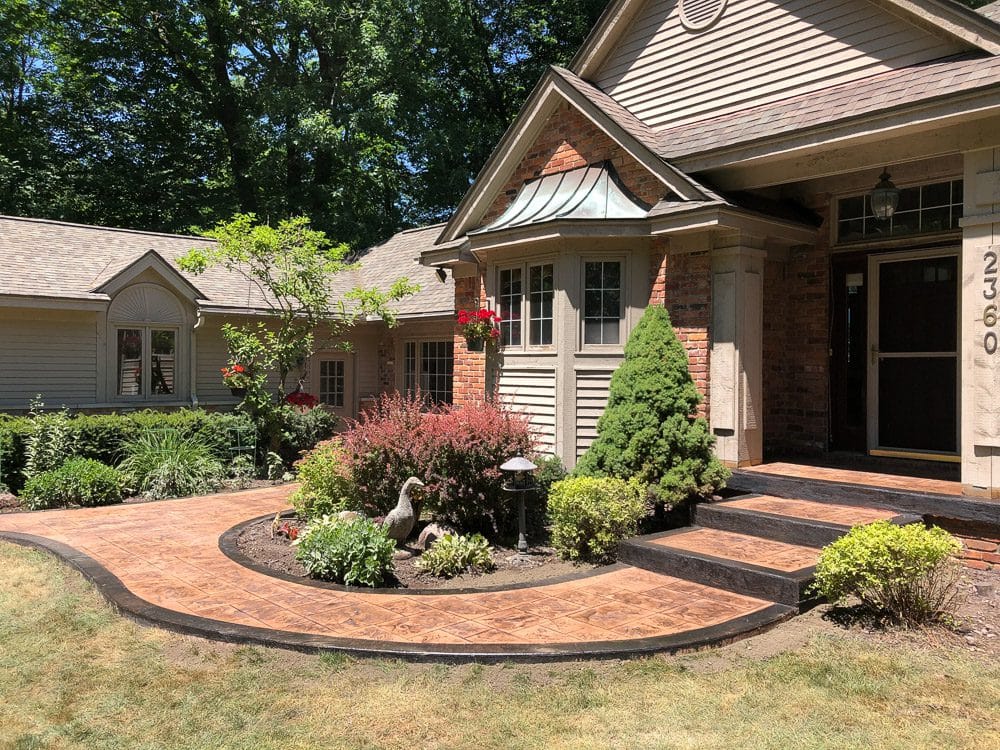Wood hardener works by penetrating deep into the wood fibers and binding them together, creating a solid and durable surface. This treatment reinforces the wood, making it resistant to further decay, rot, and insect infestation.
Wood hardeners also serve to stabilize damaged or weakened wood by strengthening it and preventing further deterioration. By acting as a bonding agent, the hardener reinforces the integrity of the wood, prolonging its lifespan and enhancing its structural stability. It is commonly used in woodworking projects, furniture restoration, and home repairs to strengthen and preserve wood surfaces.
Whether it’s a crumbling window frame or a rotted door, applying wood hardener can provide a cost-effective solution to revive and restore deteriorating wooden structures, adding years of life to them.
Understanding Wood Hardener: How Does It Work?
Wood hardener is a solution that effectively restores damaged wood by strengthening its structure. It works by penetrating deep into the wood, binding with the fibers and reinforcing them. This helps to consolidate and harden the weakened or decayed areas, making the wood sturdy and durable once again.
The science behind its effectiveness lies in its ability to penetrate the wood, reaching areas that are difficult to access. As it cures, it forms a solid bond with the wood fibers, providing a strong foundation for further treatments like painting or varnishing.
Wood hardener is particularly useful in repairing wood that is affected by rot, insect infestation, or water damage. By repairing and reinforcing the wood, it helps to prolong its lifespan and enhance its overall appearance.
Step-By-Step Guide: Applying Wood Hardener For Restoration
Wood hardener is a key component in the restoration process, bringing damaged wood back to life. Assessing the extent of the damage is crucial before embarking on any restoration project. Once the damaged areas have been identified, the next step is to prepare the wood surface for treatment.
This involves cleaning and sanding the wood to create a smooth and stable base. Applying the wood hardener is the next crucial step, as it penetrates the wood fibers and strengthens them, ensuring durability and longevity. The curing and drying time is important to achieve optimal results.
It is recommended to follow the manufacturer’s instructions for the specific wood hardener being used. Overall, wood hardener is a valuable tool in the restoration process, allowing for the preservation and enhancement of wooden structures.

Benefits Of Using Wood Hardener For Restoration
Wood hardener is a beneficial solution for restoring wood structures. It helps enhance their longevity by preventing further damage and decay. Additionally, it strengthens weakened areas, providing a cost-effective alternative to replacement options. Using wood hardener allows you to revive and preserve wooden structures without undergoing extensive and expensive reconstruction.
By penetrating deep into the wood fibers, the hardener consolidates and reinforces the weakened areas, making them more durable and resistant to future decay. It also forms a protective barrier against moisture and insects, further extending the lifespan of the wood.
With its easy application and long-lasting results, wood hardener is a valuable tool for restoration projects and an effective way to revitalize your wooden investments.
Choosing The Right Wood Hardener For Your Project
Wood hardener is a crucial product when it comes to restoring and strengthening damaged or rotted wood. Selecting the right wood hardener for your project requires careful consideration of several factors. Firstly, evaluating different brands and formulations is essential to find the one that suits your needs.
Secondly, determining its compatibility with various types of wood ensures optimal results. Lastly, understanding the recommended application techniques is crucial for proper usage. By assessing these factors, you can choose a wood hardener that effectively penetrates the wood, binds the fibers, and enhances its durability.
With the right wood hardener, you can revive, repair, and preserve damaged wood, giving it a new lease of life and extending its lifespan significantly.
Tips And Tricks For Using Wood Hardener Effectively
Wood hardener is a product designed to restore damaged or deteriorating wood. It works by penetrating deep into the wood fibers and strengthening them, making the wood more durable and resistant to further damage. When using wood hardener, it is important to ensure proper ventilation and take safety precautions to protect yourself.
Maximizing penetration is crucial for deep restoration, so make sure to apply the hardener generously and evenly. Once the wood hardener has dried, sanding and finishing techniques can be used to smooth out the surface and enhance its appearance. To prolong the lifespan of the restored wood, regular maintenance is essential.
This includes protecting it from moisture, sunlight, and pests, as well as periodically reapplying wood preservatives. By following these tips and tricks, you can effectively use wood hardener to restore and protect your wooden surfaces.

Common Mistakes To Avoid When Using Wood Hardener
Wood hardener works by penetrating into the wood fibers to strengthen and stabilize them. Over-applying or under-applying the product can lead to ineffective results. It is crucial to remove any loose or rotten wood before applying the hardener to ensure proper treatment.
Following the manufacturer’s instructions is essential for achieving the desired outcome. Rushing through the restoration process may compromise the effectiveness of the wood hardener. By avoiding these common mistakes, you can ensure that the wood hardener works effectively to strengthen and restore your wood surfaces.
Diy Vs. Professional Wood Hardener Application: Pros And Cons
Wood hardener is a product used to strengthen and reinforce damaged or weakened wood surfaces. The application of wood hardener can be done either through a do-it-yourself (DIY) approach or by hiring a professional. There are advantages and disadvantages to both options.
When opting for a DIY approach, one of the main advantages is cost savings. By doing the application yourself, you can avoid the expense of hiring a professional. Additionally, DIY allows you to have control over the process and ensures that you can complete the project on your own timeline.
However, there are some disadvantages to consider as well. DIY application requires knowledge and skill to ensure proper application and effectiveness of the product. Without expertise, you may not achieve the desired results, and this could result in further damage to the wood.
On the other hand, hiring a professional for wood hardener application has its own benefits. Professionals have the necessary experience and expertise to ensure proper application and effective results. They are also equipped with the right tools and techniques to handle any challenging wood repair.
When deciding between DIY and professional services, factors such as the complexity of the project, your skill level, and the importance of achieving optimal results should be taken into consideration.
Real-Life Restoration Success Stories Using Wood Hardener
Wood hardener works by penetrating deep into the fibers of deteriorated wood, strengthening and stabilizing it. In case study 1, a deteriorated wooden deck was restored using wood hardener, resulting in a sturdy and safe outdoor space. Case study 2 showcases how antique furniture was salvaged with the help of wood hardener, preserving its historical value and extending its lifespan.
Similarly, case study 3 demonstrates the preservation of historical wooden structures through restoration using wood hardener. This incredible product not only enhances the appearance of wood but also provides long-lasting protection against future damage. With its easy application process and impressive results, wood hardener has become a go-to solution for real-life restoration success stories.
Whether it’s a deck, furniture, or a historical structure, wood hardener proves its effectiveness in reviving and preserving wood.
FAQs Of How Does Wood Hardener Work
How Long Does It Take For Wood Hardener To Work?
Wood hardener typically takes around 24-48 hours to fully penetrate and strengthen the wood.
Does Wood Hardener Work On Rotted Wood?
Yes, wood hardener effectively works on rotted wood, providing a solution to strengthen and repair it.
Does Wood Hardener Prevent Further Rot?
Yes, wood hardener helps prevent further rot by strengthening and stabilizing the wood fibers.
Do You Sand Before Or After Wood Hardener?
Sand the wood after applying the wood hardener for better results.
Conclusion
Overall, wood hardener is a powerful solution that can revive and strengthen weakened or damaged wood. By soaking into the wood fibers, the hardener forms a bond that reinforces the structure and provides a durable surface. With its ability to penetrate deep into the wood, it tackles the root cause of the problem, effectively preventing further deterioration.
Furthermore, it acts as a primer, ensuring optimal adhesion for subsequent coatings or treatments. Choosing a high-quality wood hardener and following the proper application techniques can significantly extend the lifespan of your wood furniture, doors, or flooring. Whether you are a DIY enthusiast or a professional woodworker, having this product in your toolkit is essential for tackling those pesky wood issues.
So, when faced with weakened wood, don’t hesitate to give it the care it needs and bring it back to life with the power of wood hardener.



7 thoughts on “How Does Wood Hardener Work: Unleashing the Power of Restoration”